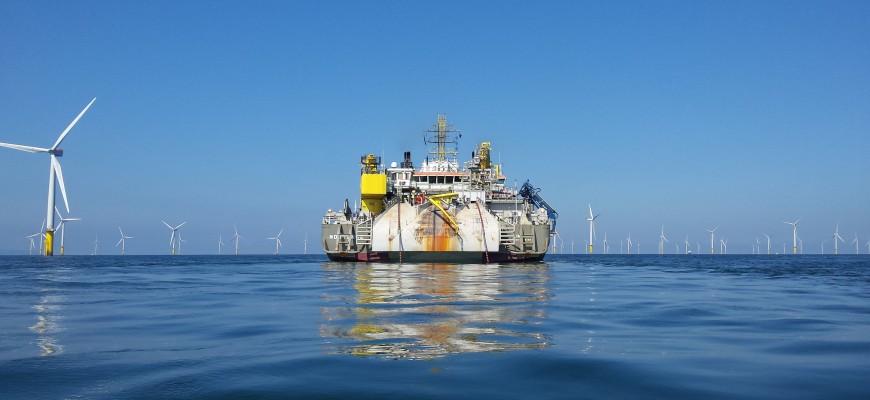The subsea cable explainer
: In 1811 the first ever power-transmitting underwater cable was installed in the Isar River in Bavaria. Then in 1885, the first transatlantic telegram was sent by Queen Victoria to President James Buchanan via subsea cable.
While the subsea cable industry has since grown significantly, those two 19th century achievements showed the concept of a subsea cable was one that worked.
Today there are two main types of subsea cable; communications and power, and the global network is estimated to stretch to over half a million miles.
Telecommunication cables transport around 97 per cent of global communications, with the newest fibre-optic cable capable of transmitting huge volumes of data every second.
Subsea power cables, meanwhile, are vital to global power supply. To transmit high power over very long distances, DC systems offer greater efficiency over traditional AC transmission system due its lower capacitive losses, however AC is well suited for several other offshore applications.
While there are numerous subsea power cables that plug into switching stations, there are fewer interconnectors that link between countries separated by sea. In fact, the longest subsea interconnector cable in the world runs for 590 kilometres between The Netherlands and Norway. The UK has four subsea cable interconnectors linking it with France, The Netherlands, Ireland and Northern Ireland with several more proposed or under development. The presence of a permanent cable connection between European countries enables increased security of supply to the UK and the opportunity for countries on both sides of the Interconnector to benefit from lower cost energy supply afforded by different energy markets at various times in the year. This hidden global network of subsea power cables is quite literally keeping the lights on.
Where does JDR come in?
As sector specialists, JDR has more than 50 years’ experience in subsea cable design and manufacturing. Today, our reliable products and services are used across the world by operators in the offshore oil and gas, and renewable energy sectors.
Technology such as subsea production umbilicals provide a variety of connections to offshore installations including electrical, hydraulic and fibre optic. The multiple requirements of offshore oil and gas fields mean that production umbilicals are crucial to their operation in delivering power and control functions to enable production of oil and gas from the seabed.
JDR also supplies the offshore wind and marine energy industries with bespoke power cables. The sector relies on subsea cables to transfer electrical energy from offshore wind turbine or tidal and wave energy generators to shore.
As an indication of just how important the offshore wind sector is, JDR was recently selected by DONG Energy as the preferred subsea power cable provider for its Hornsea Project One, which once completed will generate enough energy to power over one million UK homes.
What can we expect in the future?
The growing need for a sustainable energy mix means increasing numbers of renewable energy projects are being considered for development.
There are a number of future ideas to connect more countries with the UK. One idea is to use a subsea cable to link from Iceland is in the feasibility stage, with the intention to deliver geothermally-generated electricity to the UK, providing socio-economic benefits for both countries.
Tidal and wave energy projects will also require subsea cable use in the same way as offshore wind. Tidal could be a great opportunity for energy production in the UK, with estimates suggesting that it could hold 50 per cent of Europe’s total energy resource. However, one hurdle that still needs to be overcome is ensuring the stability of cabling connecting tidal generator installations back to the grid. To that end, JDR is working to optimise the development of specialist cables for the wave and tidal industry.
Even as the energy mix changes, expertise established in oil and gas can be transferred to other sectors. It’s also true that innovations in offshore wind are being transferred to the oil and gas industry. For example, while cable technology operating at 66 kV AC has previously been used in offshore applications, new innovative 66 kV cable technology is being introduced by JDR to significantly reduce the cost of offshore energy infrastructure. JDR is leading the way in facilitating the connection of new technologies such as this to floating oil and gas and future renewable structures, providing the vital connection to the offshore energy industry.

